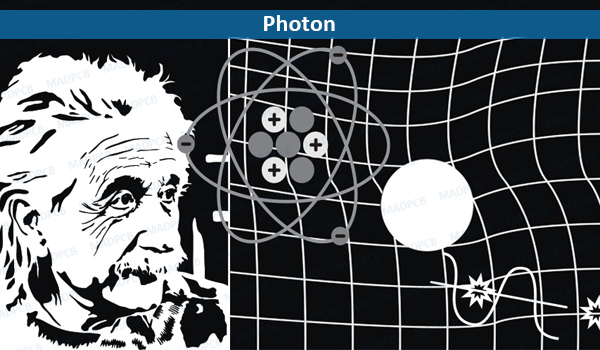What’s Photon?
The Photon (Greek: φῶς, phōs, light) is a type of elementary particle. It is the quantum of the electromagnetic field including electromagnetic radiation such as light and radio waves, and the force carrier for the electromagnetic force. Photons are massless, so they always move at the speed of light in vacuum, 299792458 m/s (or about 186,282 mi/s). The photon belongs to the class of bosons.

Photon
Like all elementary particles, photons are currently best explained by quantum mechanics and exhibit wave–particle duality, their behavior featuring properties of both waves and particles. The modern photon concept originated during the first two decades of the 20th century with the work of Albert Einstein, who built upon the research of Max Planck. While trying to explain how matter and electromagnetic radiation (EMR) could be in thermal equilibrium with one another, Planck proposed that the energy stored within a material object should be regarded as composed of an integer number of discrete, equal-sized parts. To explain the photoelectric effect, Einstein introduced the idea that light itself is made of discrete units of energy. In 1926, Gilbert N. Lewis popularized the term photon for these energy units. Subsequently, many other experiments validated Einstein’s approach.
In the Standard Model of particle physics, photons and other elementary particles are described as a necessary consequence of physical laws having a certain symmetry at every point in spacetime. The intrinsic properties of particles, such as charge, mass, and spin, are determined by this gauge symmetry. The photon concept has led to momentous advances in experimental and theoretical physics, including lasers, Bose–Einstein condensation, quantum field theory, and the probabilistic interpretation of quantum mechanics. It has been applied to photochemistry, high-resolution microscopy, and measurements of molecular distances. Recently, photons have been studied as elements of quantum computers, and for applications in optical imaging and optical communication such as quantum cryptography.
How Lasers Work?
A laser is a device that controls the way that energized atoms release photons. “Laser” is an acronym for light amplification by stimulated emission of radiation, which describes very succinctly how a laser works.
Although there are many types of lasers, all have certain essential features. In a laser, the lasing medium is “pumped” to get the atoms into an excited state. Typically, very intense flashes of light or electrical discharges pump the lasing medium and create a large collection of excited-state atoms (atoms with higher-energy electrons). It is necessary to have a large collection of atoms in the excited state for the laser to work efficiently. In general, the atoms are excited to a level that is two or three levels above the ground state. This increases the degree of population inversion. The population inversion is the number of atoms in the excited state versus the number in ground state.
Once the lasing medium is pumped, it contains a collection of atoms with some electrons sitting in excited levels. The excited electrons have energies greater than the more relaxed electrons. Just as the electron absorbed some amount of energy to reach this excited level, it can also release this energy. As the figure below illustrates, the electron can simply relax, and in turn rid itself of some energy. This emitted energy comes in the form of photons (light energy). The photon emitted has a very specific wavelength (color) that depends on the state of the electron’s energy when the photon is released. Two identical atoms with electrons in identical states will release photons with identical wavelengths.
In PCB manufacturing of flex circuits and HDI boards, laser cut, laser drilling (microvia) and LDI (laser direct imaging) are the three main applications of lasers. Finding a reliable turnkey PCB assembly manufacturer? Keep in touch with MADPCB now.
